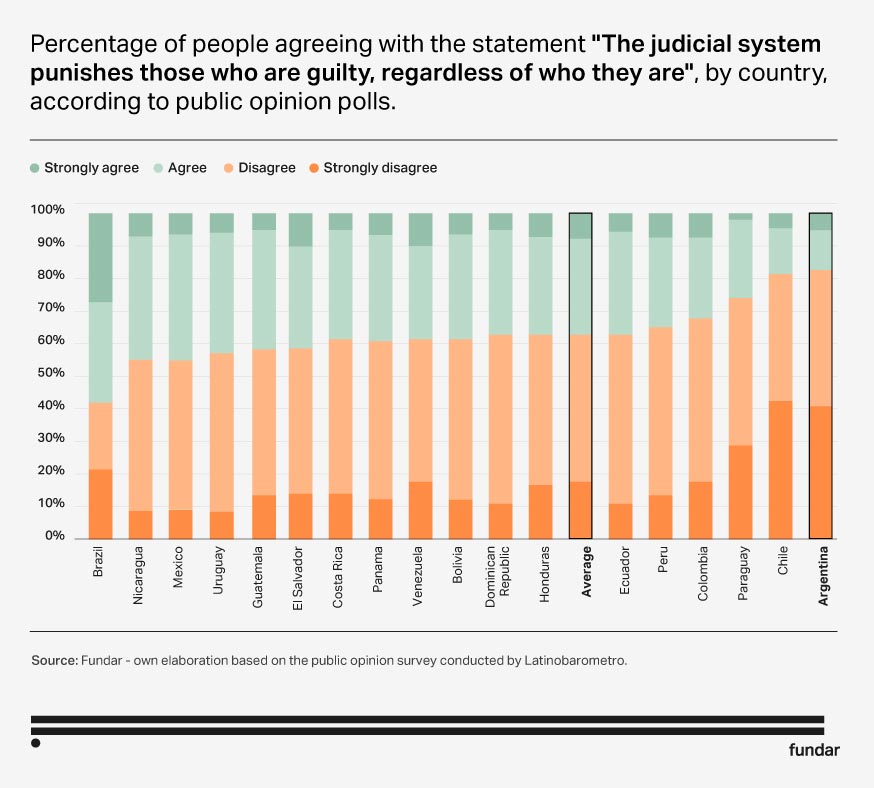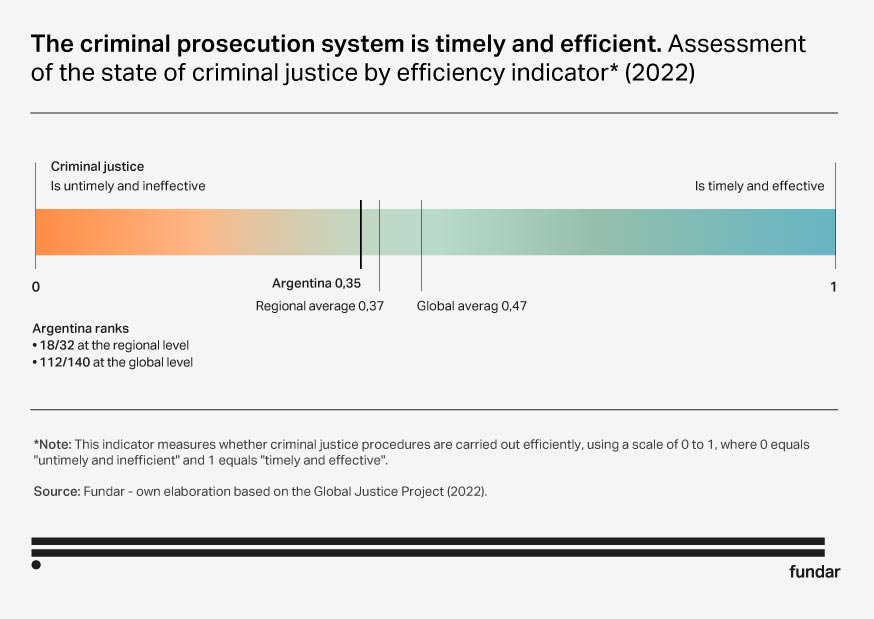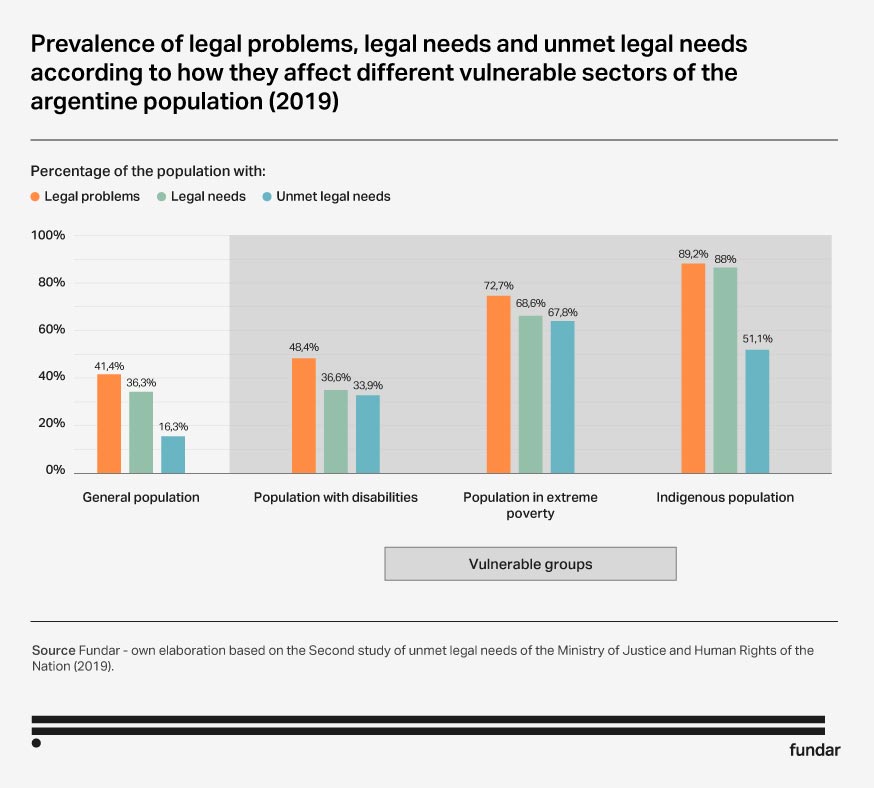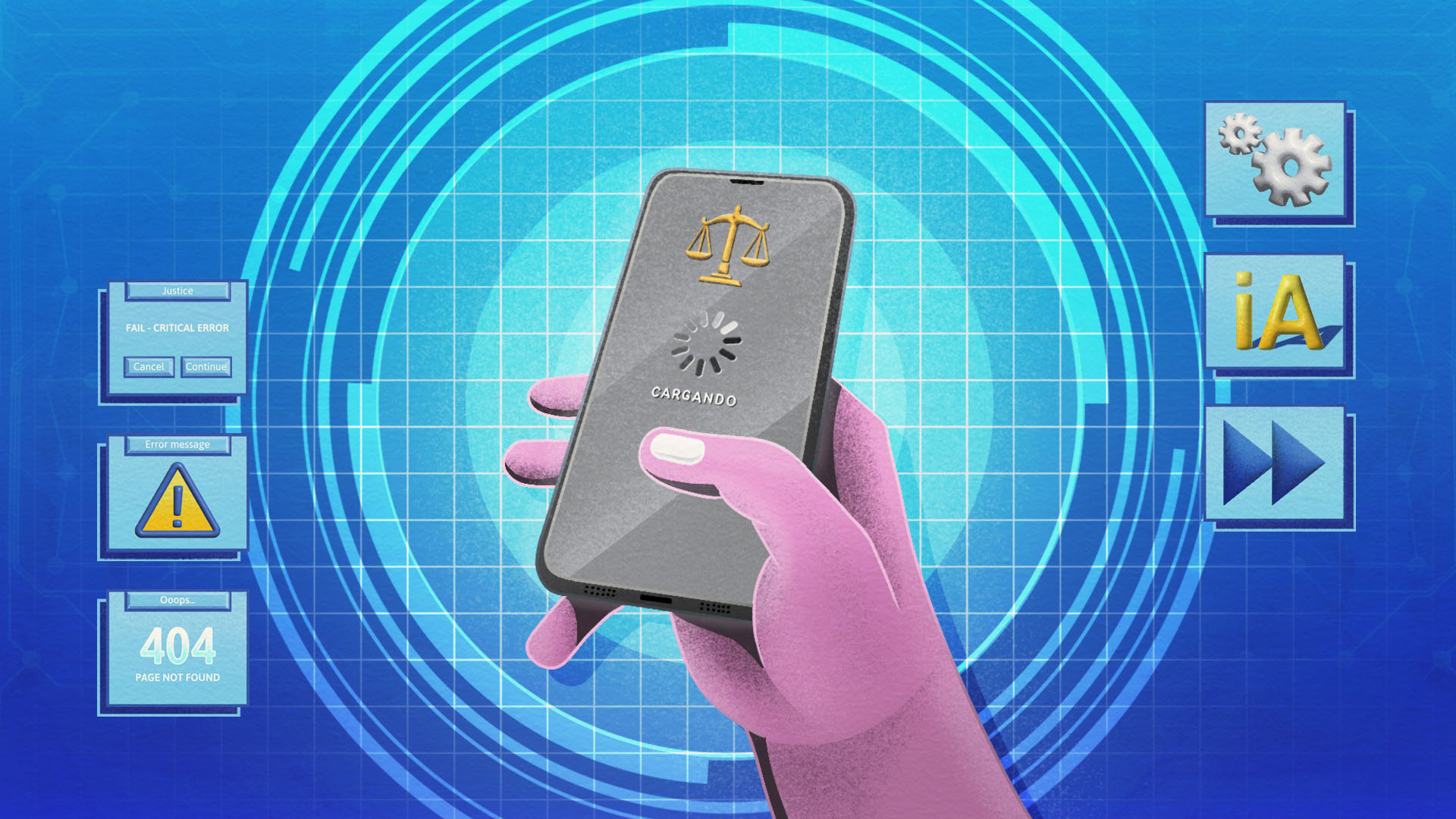All conversations about Argentina’s Judiciary usually end the same: it needs to improve. We keep talking about the number of jobs or entities, but access or transparency are hardly debated. How could the Justice System improve? Digitalization could be the answer. A proposal to make justice faster, more accessible and transparent.
Illustration: Nestor Agustín Vassallo
Argentina’s Judiciary faces challenges in terms of efficiency, access and transparency. Measured by international standards, its case resolution rates are low and resolution terms are too long. Another problem is unequal access, especially for the most disadvantaged social sectors. Moreover, the unavailability of quality statistics hinder the improvement of judicial performance and citizen confidence.
This paper proposes to address these challenges by accelerating the digital transformation process. It identifies opportunities for improvement and transformation through the incorporation of digital tools, process automation, the use of artificial intelligence and innovation of operating dynamics. It lays the groundwork for planning a digital transformation of justice at the national level.
Diagnosis of the Judiciary
Low confidence

Low public confidence in the Argentine judiciary is a long-standing and persistent problem. Over 82% of respondents disagreed with the statement that the judicial system punishes those who are guilty, which reflects they believe that justice is not administered impartially and fairly in Argentina.
Low productivity and efficiency levels


The sentiment data are consistent with the Rule of Law Index, which shows concerning results in terms of delays and inefficiency of the judicial system, including both civil and criminal proceedings. Courts show low levels of productivity and resolution rates and average case duration well above reasonable standards.
Barriers to access

Access to justice depends on social, economic, institutional, psychological and informational factors. This dependence is accentuated in disadvantaged sectors of society. Judicial institutions are inaccessible to them because the geographical distances entail costs that prevent them from starting or else pursuing a judicial proceeding.
Lack of transparency and access to information

A close look at the performance of judicial institutions in terms of transparency reveals that prosecutors and public defenders achieved the highest scores, outperforming the Executive and Legislative Branches. On the other hand, the Supreme Court and the Judicial Council have the lowest scores.
Existing statistics are either incomplete or outdated, which hinders the evaluation of courts operations and citizens and stakeholders´ understanding of the decisions made.
Digital transformation as a strategy
Against this backdrop, several institutional reforms have been proposed, focusing on the number and composition of judicial offices and their governing bodies. Discussions have once and again turned to the composition of the Judicial Council or the number of members of the Supreme Court, but these measures do not necessarily improve case resolution rates, access to justice for citizens or the transparency of the judicial system.
The digitization of the judicial system represents a unique opportunity of overcoming the shortcomings of the Argentine judicial system. Moving forward along the path of digital transformation by innovating practices and incorporating new digital tools will simplify processes, reduce costs and case resolution delays, and eliminate geographical, economic and information barriers hindering access to justice. It will also contribute to data creation, management and dissemination, facilitate accountability and foster citizen confidence in the judicial system.
Overview of the digitization process
First steps (2010-2020)
Since 2010, judicial bodies have begun to implement certain improvements to case management systems. In 2011, Law 26,685 authorized the electronic use of case dockets, documents, signatures, communications and addresses in all judicial and administrative processes. In 2012, a judicial computer system, Sistema Informático de Gestión Judicial, was introduced to digitize judicial proceedings (which, although a great breakthrough at the time, quickly became outdated). Between 2016 and 2019, the Justice 2020 Program created the Argentine Justice Open Data portal with the participation of 55 institutions.
A process accelerated by the COVID-19 pandemic (2020)
The COVID-19 pandemic accelerated the digitization process that had so far been slow and very inconsistent across different jurisdictions. Not only did it involve incorporating digital tools that were previously optional or ancillary, but it also forced courts to streamline their processes and workflows. In turn, they had to innovate in the organization of internal work and communication, both internally and with users of the system. The pandemic also accelerated the implementation of regulatory frameworks and protocols to validate digital proceedings and documents.
This revealed the advantages of digitalization, but also unveiled the deficiencies in terms of technological infrastructure and staff training. Progress is still meager and limited. Although the Judiciary has made significant improvements in infrastructure and functionalities, the registration system still reproduces the logic of a physical document processing.
Innovative initiatives
The introduction of digital justice solutions should be approached as a comprehensive, system-wide and integral reform that goes beyond technological aspects. It is an institutional change that involves multiple organizational and cultural reforms to accompany the adoption of new technologies.
Argentina lacks defined public policies and institutional incentives to promote the use of artificial intelligence (AI) in the administration of justice. Existing institutional innovation processes are limited to pioneering experiences, with a limited scope and at an early stage of development.
Artificial intelligence for justice: experiences, opportunities and risks
By systematizing information, identifying patterns and creating predictions, Artificial Intelligence can greatly contribute to the improvement of processes and decision making in the justice system. It can help simplify and automate tasks, reduce errors and assist in generating documents which in turn result in reduced judicial response times, improved efficiency in resource allocation and a reduction of court bureaucratic tasks. This would allow staff to focus on resolving complex or priority cases.
However, the introduction of AI in the justice system is not risk-free. One of the most concerning is the potential reinforcement of discrimination and bias. It is critical to guarantee that AI judicial systems comply with fundamental principles such as algorithmic transparency, algorithmic traceability or explainability, open access to algorithms, and algorithmic non-discrimination.
Prioritizing AI applications in justice
The implementation of AI techniques does not offer a single, universal path. Some applications may have greater potential for impact than others and may also be more problematic than others. This is why the European Commission for the Efficiency of Justice (CEPEJ) adopted in 2018 the “European Ethical Charter on the Use of Artificial Intelligence” where it reviews different uses, and recommends some while discouraging others.
Recommended uses
- Machine learning techniques to improve sentencing and supplement authorities’ searches.
- Establishing chatbots to provide basic legal information in an accessible way.
- Creating online templates of legal documents to facilitate access, increase interoperability and speed up processing times.
- Adopting AI and data science techniques to analyze judicial activity, develop indicators and make evaluations.
Uses requiring methodological precautions
- Development of civil litigation standards.
- Support for alternative civil case resolution mechanisms through “predictive justice” tools that are not impartial and reliable and should not be the sole basis for decision-making.
- Online dispute resolution (without human intervention).
- Use of algorithms in criminal investigations to identify where crimes are being committed.
Discouraged uses
- Profiling judges or predicting judicial decisions.
- Use of algorithms in criminal matters for the purpose of profiling individuals, criticized due to erroneous and discriminatory results.
Decalogue for mapping the digital transformation of the judicial system
- Creating a strategic plan for digital innovation based on a diagnosis based on a participatory process, including an implementation and evaluation plan.
- Establishing a coordination mechanism between the different bodies of the justice system, a space for inter-institutional dialogue, and a team responsible for implementing the strategic plan.
- Reviewing existing processes to identify and optimize inefficiencies and bottlenecks.
- Ensuring full access to data stored in the Judicial Council’s case file management system and strengthening its statistics area.
- Encouraging bottom-up innovation. Supporting committed actors; identifying and sharing good practices that can be replicated; carrying out a pilot project.
- Designing user-centered reforms, involving users and conducting pilot tests prior to implementation.
- Promoting the legislative reforms required to facilitate technological innovation, instead of waiting for those reforms as a condition to move forward.
- Ensuring ethical application of technology and identifying and managing risks of bias.
- Establishing an information security policy to protect personal and confidential data.
- Allocating the necessary funds for investment in technology, infrastructure and training.

